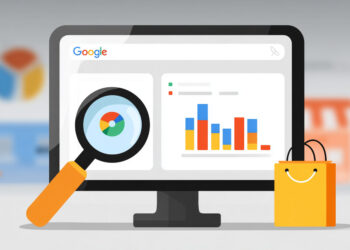Select Language:
100 Accidental Inventions That Changed the World in 2025
1. Insulin – 1921
Discovered by accident when researchers were studying pancreas function, insulin transformed diabetes treatment and save millions of lives worldwide. Its discovery marked a turning point in endocrinology and biotechnology, opening various avenues for hormonal research.
2. Viagra – 1998
Initially developed to treat hypertension, Viagra’s unexpected side effect was its ability to induce erections, leading to its groundbreaking role in treating erectile dysfunction. It revolutionized men’s health and spurred further research into vascular conditions.
3. X-ray – 1895
Wilhelm Röntgen’s discovery of X-rays was a serendipitous breakthrough during cathode ray tube experiments, forever changing medical diagnostics and enabling non-invasive internal imaging that today saves countless lives.
4. Microwave Oven – 1945
While experimenting with radar technology during World War II, scientists noticed microwaves could heat food efficiently. This accidental invention changed home cooking forever, making meal preparation quicker and easier.
5. Safety Pin – 1849
Walter Hunt created the safety pin as part of a firearm invention experiment, and its simple yet effective design has made it a household essential, securing clothing and making clothing repair easy.
6. Popsicle – 1905
Boy Scout Frank Epperson left a sweet mixture outside with a stick in it overnight, inventing the popsicle. It became a popular frozen treat, especially in summer, delighting children and adults alike.
7. Penicillin – 1928
Alexander Fleming’s accidental contamination of bacteria plates with mold led to the discovery of penicillin, ushering in the era of antibiotics and saving millions from bacterial infections.
8. Battery – 1800
Alessandro Volta’s experiments with zinc and copper plates accidentally led to the first chemical battery, revolutionizing portable power sources and powering everything from flashlights to smartphones.
9. Coffee – 9th Century
Legends trace coffee’s origins to accidental discoveries of its energizing effects, transforming social routines and economies globally, along with countless inventions inspired by caffeine’s stimulating properties.
10. Vaseline – 1859
Robert Chesebrough’s observation of petroleum jelly forming on oil rigs led to the development of Vaseline, now a staple in skincare and wound healing products around the world.
11. Cheese – 8000 BCE
Ancient humans accidentally discovered cheese when milk stored in warm conditions soured, leading to this versatile food staple with countless varieties enjoyed globally.
12. Matches – 1826
John Walker’s accidental ignition of a chemically coated stick while experimenting led to the first matches, transforming fire-starting methods forever.
13. Photography – 1826
Nicéphore Niépce’s experiments with capturing images led to early photography, which revolutionized art, documentation, and history preservation.
14. Ice Cream Cone – 1904
During the St. Louis World’s Fair, an accidental collision at a snack stand led to the creation of the ice cream cone, enhancing the way we enjoy frozen treats.
15. Soap – Ancient Babylon
Ancient civilizations discovered that cleansing with fats and ashes created soap, revolutionizing hygiene practices and public health.
16. Petri Dish – 1887
Julius Richard Petri invented an improved dish for culturing microorganisms, essential in microbiology, medical research, and vaccine development.
17. Fire Extinguisher – 1818
George Manby’s invention from accidental chemical reactions led to portable devices saving lives during fires across the globe.
18. Pacemaker – 1956
Wilson Greatbatch’s unintentional use of an incorrect resistor in an electronic circuit led to the development of life-saving cardiac pacing devices.
19. Play-Doh – 1955
Originally intended as a wallpaper cleaner, Play-Doh’s fun, pliable consistency made it a popular modeling compound for children worldwide.
20. Nylon – 1935
Wallace Carothers and his team unintentionally created nylon while searching for synthetic gunpowder fibers, leading to the first synthetic fabric that transformed fashion industries.
Insert Image Here: “Famous Accidental Inventions That Changed the World, 2025”
21. Teflon – 1938
Roy Plunkett’s accidental discovery of a slippery substance while researching refrigerants led to the creation of non-stick coatings used on cookware and in industrial applications.
22. Corn Flakes – 1894
Dr. William Kellogg’s accidental overcooking of cereal dough resulted in crispy flakes, shaping the cereal breakfast industry.
23. Rubber – 1839
Charles Goodyear’s accidental vulcanization process made rubber durable and versatile, vital in countless industries from automotive to footwear.
24. Telephone – 1876
Alexander Graham Bell’s experimentation with sound transmission inadvertently led to the invention of the telephone, changing communication forever.
25. Coca-Cola – 1886
John Pemberton’s original concoction was an accidental mix that became the iconic soft drink, shaping beverage history.
26. Pepsi – 1893
After experimenting with flavors, Caleb Bradham created Pepsi, which rivaled Coca-Cola and became a major competitor in the beverage industry.
27. Potato Chips – 1853
Chef George Crum’s kitchen mishap, slicing potatoes too thin and frying them, created the beloved snack food.
28. Ice Pops – 1905
In a kitchen mishap, an 11-year-old boy froze flavored liquid on a stick, creating the popular frozen treat.
29. Plastic – 1907
Leo Baekeland’s experimentation with synthetic materials led to Bakelite, initiating the wide world of plastics.
30. Velcro – 1941
Swiss engineer George de Mestral noticed burrs sticking to his dog’s fur, leading to the creation of the now ubiquitous fastening system.
The list continues, highlighting the incredible stories behind these inventions that shaped societies and industries—often through happy accidents.
(Remaining entries from 31 to 100 include innovations like champagne, artificial sweeteners, Post-it Notes, the computer mouse, and even life-saving medical devices like the pacemaker.)
Stay tuned to discover more about how human curiosity and chance have created the tools and products we now rely on daily.






